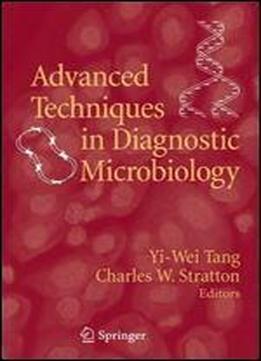
Advanced Techniques In Diagnostic Microbiology 1e
2006 / English / PDF
4.6 MB Download
Clinical microbiologists are engaged in the field of diagnostic microbiology to determine whether pathogenic microorganisms are present in clinical specimens collected from patients with suspected infections. If microorganisms are found, these are identified and susceptibility profiles, when indicated, are determined. During the past two decades, technical advances in the field of diagnostic microbiology have made constant and enormous progress in various areas, including bacteriology, mycology, mycobacteriology, parasitology, and virology. The diagnostic capabilities of modern clinical microbiology laboratories have improved rapidly and have expanded greatly due to a technological revolution in molecular aspects of microbiology and immunology. In particular, rapid techniques for nucleic acid amplification and characterization combined with automation and user-friendly software have significantly broadened the diagnostic arsenal for the clinical microbiologist. The conventional diagnostic model for clinical microbiology has been labor-intensive and frequently required days to weeks before test results were available. Moreover, due to the complexity and length of such testing, this service was usually directed at the hospitalized patient population. The physical structure of laboratories, staffing patterns, workflow, and turnaround time all have been influenced profoundly by these technical advances. Such changes will undoubtedly continue and lead the field of diagnostic microbiology inevitably to a truly modern discipline. Advanced Techniques in Diagnostic Microbiology provides a comprehensive and up-to-date description of advanced methods that have evolved for the diagnosis of infectious diseases in the routine clinical microbiology laboratory. The book is divided into two sections. The first techniques section covers the principles and characteristics of techniques ranging from rapid antigen testing, to advanced antibody detection, to in vitro nucleic acid amplification techniques, and to nucleic acid microarray and mass spectrometry. Sufficient space is assigned to cover different nucleic acid amplification formats that are currently being used widely in the diagnostic microbiology field. Within each technique, examples are given regarding its application in the diagnostic field. Commercial product information, if available, is introduced with commentary in each chapter. If several test formats are available for a technique, objective comparisons are given to illustrate the contrasts of their advantages and disadvantages. The second applications section provides practical examples of application of these advanced techniques in several "hot" spots in the diagnostic field. A diverse team of authors presents authoritative and comprehensive information on sequence-based bacterial identification, blood and blood product screening, molecular diagnosis of sexually transmitted diseases, advances in mycobacterial diagnosis, novel and rapid emerging microorganism detection and genotyping, and future directions in the diagnostic microbiology field. We hope our readers like this technique-based approach and your feedback is highly appreciated. We want to thank the authors who devoted their time and efforts to produce their chapters. We also thank the staff at Springer Press, especially Melissa Ramondetta, who initiated the whole project. Finally, we greatly appreciate the constant encouragement of our family members through this long effort. Without their unwavering faith and full support, we would never have had the courage to commence this project.











